- Home
- Clive Cussler
The Rising Sea Page 24
The Rising Sea Read online
Page 24
Gao nodded. “We have video, voice recordings, movement analysis. Everything we need to construct a replica.”
“Good,” Han said. “There’s a helicopter on the way in. Get back to the island and get working on them immediately.”
“‘Them’? You want more than one?”
“Oni has brought us a gift: the policeman who helped Austin back in Tokyo. I want a replica of him also; it will make it that much more difficult for the authorities to cause us trouble when we make our move.”
* * *
• • •
KURT AND AKIKO made it to the warehouse. The loading bay waited just beyond.
Using Gao’s key card, Kurt opened the last door. A stairwell led down to the floor, where towers of wooden crates and machinery loomed like a miniature city.
Several vehicles sat at the far end.
“We’re going to need a way out of this, once we get Nagano,” Kurt said. “See if you can find the keys to one of those cars or trucks.”
“If not, I can hot-wire one,” Akiko said.
“Good,” Kurt said. “If we have a choice, something sturdy enough to break down metal gates and brick walls would be nice.”
“I’ll do my best,” Akiko said.
“I probably don’t have to tell you this after what we’ve seen, but watch out for the automated equipment. If Han can use machines to storm an armed compound, he can turn anything with batteries and cameras into a whistle-blower or worse.”
Akiko nodded and moved off, traveling swift and silent. Kurt went the other direction, heading for the back door. He pressed up against it and opened it a crack. He saw Ushi-Oni, bossing around a group of Han’s men. He was barking orders as the men went to work emptying the sedan.
First, they removed some long wooden boxes. Then other items wrapped in leather. They placed the boxes on a cart with great care before moving back to the car and dragging out Superintendent Nagano with far less caution.
Nagano sagged to the ground as he was pulled out of the sedan, which Kurt noticed was sporting government plates.
One of the men shouted at Nagano. A second man kicked him as they tried to force him to stand on his own.
At least he was alive.
Kurt hoped some of them would leave with the treasure they had, but they stuck together. And Kurt soon saw why. A helicopter was descending toward a concrete swath just beyond where they stood.
“Five against one. Wonderful odds.” Kurt looked around for a way to even the playing field and settled on using a forklift.
Starting the electrical vehicle was easy. Driving it a little more difficult. But he didn’t need to be as precise as he’d been out on the racetrack.
He backed up, pivoted and sped forward, raising the arms of the forklift like a pair of spears.
He drove around and out through an open bay door and, from there, came flying around the edge, gunning for Ushi-Oni.
The Demon saw him at the last second and dove out of the way. Two of his men weren’t so lucky. The forklift slammed them like a battering ram; luckily, they weren’t skewered.
Kurt immediately pulled backward and spun to the right. The three-wheeled vehicle pivoted with surprising swiftness and the raised forks took out another of Han’s men, knocking him out of the way, cracking several ribs in the process.
Gunfire rang out before Kurt could do anything else. Ricochets and near misses forced him off the forklift. He dove to the ground and took cover. By the time he looked up, Han’s remaining guard was dragging Nagano to the helipad.
Kurt rose up, intending to give chase, but Ushi-Oni blocked the way. Instead of a gun, Oni held a gleaming katana sword.
He waved the sword toward Kurt. “To the samurai, a blade was worthless if it couldn’t cut a man in half with a single swing. They tested their weapons on captives and criminals. I’m going to test this one on you.”
He stepped forward and swung at a diagonal angle. Kurt jumped behind the stationary forklift and the blade slammed against the protective cage. Looking for any kind of weapon to defend himself with, Kurt grabbed a pry bar from the side of the forklift.
“That won’t help you,” Oni said. He lunged forward again, swinging for Kurt’s head.
Kurt ducked and held the pry bar up at the same time. It deflected the blade just enough to save him. But the sword came back from the other direction and knocked the bar from Kurt’s hand. A third swing forced Kurt to dive away once more.
He rolled and came up bleeding. His suit was slashed, his shirt was sliced and there was blood oozing from a line on the back of his arm. The tip of the blade had made so fine a cut, Kurt barely felt it.
“The next one will take your head,” Oni insisted.
Kurt didn’t doubt it, but the sound of fire engines closing in and of the helicopter landing gave him hope. “If I were you, I’d get out of here. You’ll never get to spend Han’s money if you’re serving life in prison.”
Kurt’s words brought the fury of the Demon down on him. The sword came hard once more. Kurt moved to the side, keeping the forklift between him and Oni. Oni went one way, Kurt went the other. It was an effective defense if reinforcements showed up. But Kurt needed an offense. Now.
He lunged for the controls, reaching into the cage, turning the key and spinning the small wheel. The forklift jerked to the side and spun randomly. Oni was knocked backward, but more of Han’s men were closing in.
Kurt had no choice. He jumped onto the forklift and threw it into reverse, speeding away from Oni and the men as the helicopter touched down. He raced back into the warehouse, found himself surrounded but was bought freedom when Akiko came crashing through the stacks of equipment and crates in a ten-wheeled truck.
As Han’s men took cover from the avalanche, Kurt climbed into the truck and Akiko backed out of the warehouse. She drove across the lot, blasted her way through the gate and turned down the access road as the fire trucks came racing up it.
“Keep going,” he said. “Don’t stop for anything, not even the police.”
As she drove, Kurt got on the phone. “Joe, where are you? They took Nagano in the helicopter.”
“I saw that,” Joe replied. “I’m trying to follow it and get a tail number. But I’m running out of road.”
“Where are they headed?”
“Southwest. Along the bay.”
* * *
• • •
JOE DROVE with skills that would have matched Kurt out on the racetrack, but he had to deal with real-world issues: other cars, potholes and pedestrians. He swerved around a slow-moving bus, lost sight of the helicopter as it went behind the trees and then found it again as the view opened up.
He came to a one-way road, ignored the rules of traffic and followed it downhill. By the way it sloped, he knew he was heading for the shoreline.
A building blocked his view. Seconds later, a small car almost hit him head-on. Horns blared and Joe drove into the gutter, where he avoided taking out a fire hydrant. He pulled back onto a two-way street as soon as he could.
“Where’d you go?” he said, craning his neck around and looking for the fleeing helicopter.
Finally, he saw it again, farther out over the water; it was definitely heading out to sea.
He found another street, sped up again and then slammed on the brakes as his lights reflected off a sign at the end of the road. The tires screeched and the Skyline GT-R slid to a stop inches from a fifty-foot drop.
Joe got out of the car and raised the binoculars. He tracked the helicopter for another thirty seconds and then its lights went out and it vanished in the night sky.
40
WASHINGTON, D.C.
THE EARTH STUDIES LAB filled the basement of the main NUMA building in Washington, D.C. It was located down there for purely practical reasons. Being an experimental facility, it took
up a lot of space and contained bulky equipment, including large tanks filled with water, sand, clay and various other soils.
Conducting tsunami studies, seismic analyses and erosion experiments meant that sections of the lab were subjected to artificial earthquakes, weather and flooding and no one wanted overflow from the latest rogue wave simulation dripping down through the ceiling above them.
As Rudi Gunn stepped from the elevator and onto the laboratory floor, he was careful to look for puddles. He found none and made his way to the geology department, where two of NUMA’s best had been working through the night and into the morning. He arrived first at the desk of Robert Henley.
Henley was one of the marine geologists who worked under Paul. Thin and ghostly pale, Henley wore his blond hair long and his beard even longer. It gave him the look of an emaciated Nordic prince.
“Morning, Henley.”
“Is it?” Henley asked. “I’d hoped it was still dark outside.”
“Sun’s just coming up. I was glad to get your message when I arrived. So you and Priya have something to show me.”
“We think we know where the influx of water is coming from.”
“That’s good news,” Rudi said.
Henley looked grim. “You’d better hold off on that until you hear the details,” he said. “I’ll let Priya explain. It was her theory that we’ve been following.”
Henley reached over to an intercom button and pressed it. “Rudi’s here,” he said. “Ready to tell him what we’ve found?”
“Be right there,” an English voice replied.
As Henley straightened some papers on his desk, Rudi caught sight of Priya Kashmir approaching.
Priya was Indian, born in Mumbai but had grown up in London. She’d spent a year at Oxford before transferring to MIT. She had dark eyes, high cheekbones and full lips. Her mahogany-colored hair was cut to shoulder length at the moment, while a tiny diamond stud rested on the right side of her nose where she’d recently had it pierced.
It would have been easy to describe her as beautiful. Easy and a disservice. While she had classic features and an alluring smile, her beauty was secondary to her intellect and perhaps third in comparison to her determination.
Priya had graduated in the top of her class at MIT while building a foundation to bring learning material to poor children in rural India. She’d been quite an athlete as well, running track and swimming competitively while finishing her Master’s.
Rudi had hired her after a single interview and she’d been several weeks from joining NUMA when a terrible car crash had damaged her spine. Five surgeries and six months of painful rehabilitation had been unable to restore her mobility—though she had regained some feeling in her toes and that gave her hope.
Given the choice to come aboard or continue her rehab, she’d taken Rudi’s offer to start working and had spent most her time in Hiram Yaeger’s computer lab. She’d shown a great ability to focus on things others overlooked and, for that reason, Rudi had assigned her to work with the geology team in Paul’s absence.
She came around the corner, propelling herself forward in a compact wheelchair. It was a product of her own design, modeled after the athletic wheelchairs used in sporting activities and moved by her own strength instead of a battery pack.
She rolled up to Rudi and Henley, wearing a sleeveless gray top and blue jeans. Henley couldn’t take his eyes off her. Something Priya did not miss. “What are you staring at, Robert?”
“Sorry,” Henley said. “I can’t decide what I’m more envious of, your perfect tan or your muscular arms.”
Priya broke into a surprised smile. “Nicest compliment I’ve heard in ages. The tan comes from Mum and Dad. The biceps are all mine. Push yourself around in one of these for a while and you’ll be buff before you know it.”
“I’d never make it out of the room,” Henley said. “My arms are like wet noodles.”
Rudi cleared his throat and got everyone’s attention. “I understand you two have found something.”
“Yes,” Priya said. “But I’m not certain it will be welcome news.”
“I warned him,” Henley added.
“Feelings can wait,” Rudi said. “We need answers. What have you got?”
Priya moved to a new position. “It starts with what we haven’t found. The first possibility was a subsurface aquifer that the Chinese had ruptured. It would have to be incredibly large and under massive pressure to cause the geyser field that Paul and Gamay recorded. Hard to hide such a thing. We looked at a pair of sub-bottom profiling studies done by the Japanese. The coverage area doesn’t extend much into the Chinese side, but nothing in the study indicates a major pool of pressurized water beneath the continental shelf. So we went deeper.”
Henley took it from there. “We ‘borrowed’ some data from an oil exploration company that charted the region several years ago. Before the price of oil crashed, everyone was looking for deepwater wells. This company took it to an extreme. They were looking for hydrocarbon deposits, several miles below the seabed. The kind that can’t be extracted profitably unless the price of oil is through the roof. A hundred and fifty dollars a barrel or more.”
“And?”
“No oil,” Henley said. “Only a few small natural gas deposits on the Chinese side.”
“What about water?” Rudi asked.
“No water either, but they did find a complex series of vertical fractures running deep into the crust, well beyond the range of the survey.”
“Vertical fractures?”
“Of a type I’ve never seen before,” Henley admitted. “Nothing in the geology database matches them. It’s like the survey found a new type of rock. Interesting in its own right but not an ocean of freshwater.”
“That made us look even deeper,” Priya said. “And it got me thinking about ways to study what was down there without needing to send an ROV to the bottom. We settled on looking for Kenzo’s Z-waves. And we found them. Apparently, some of the more advanced seismic monitoring stations are equipped to detect them, but the computer programs they run on have been filtering the data out.”
“Why?”
“Because the pattern they produce is identical to the signal generated by a deep-earth mining system using high-intensity sound waves.”
“Mining?”
Priya nodded.
“So that’s what the Chinese have been doing down there.”
“So it appears,” Priya said. “But I’m afraid that’s not the most interesting or stunning news. Once we got ahold of the raw, unfiltered data and ran it through a program that Robert designed, we were able to determine the depth and orientation of the Z-waves. What we found was incredible. The Z-waves are propagating vertically, down into the crust and back up.”
“How deep do they go?” Rudi asked.
Henley answered. “Through the crust and the upper mantle, into an area known as the transition zone. At least two hundred two hundred miles below the surface. At the bottom of the transition zone, the Z-waves are reflected back off the denser rock and bounced back up to the surface, creating a harmonic vibration on the way in and the way out. And that tremor is wreaking havoc on a particular type of mineral within the transition zone.”
“What kind of mineral?”
“Ever heard of ringwoodite?”
“Ring-wood-ite?” Rudi shook his head. “No.”
“It’s a crystalline mineral similar to olivine that forms only under intense pressure. It’s found deep in the transition zone beneath the upper mantle. In 2014, geologists studying a diamond that had been brought to the surface by a volcanic eruption discovered a sample of ringwoodite trapped within it. To their surprise, the strange mineral was not alone; it was concealing a special form of water.”
Priya finished for him. “This led to another study. One to determine how much ringwoodite was
present in the mantle and how much of that contained water. The teams that worked on it used seismic activity as their ultrasound generators and measured the results over a period of months. They discovered that the entire transition zone, one hundred and fifty miles thick, is permeated with ringwoodite and most of that is trapping water. It’s normally held there under the intense pressure, capped by the rock layers above. Something like carbonated water in a soda bottle. But the Chinese mining effort has fractured the rock all the way down to the transition zone, breaking the cap and releasing the pressure.”
“And thus releasing the water,” Rudi said, grasping the rest of the argument. “Which is forcing its way up through the crust under all that pressure. That would explain the field of geysers we’ve seen. And it might give us a clue how to stop it or how bad it’s going to get. I’m not sure why you’re so glum, I don’t consider this bad news at all.”
“Perhaps you should,” Henley said. “This isn’t an oil well that can be capped or even an underground lake that will spew forth for a while and then dry up. The transition zone contains a vast amount of water. An almost unfathomable amount—to use a nautical term.”
“I need numbers,” Rudi said. “Just how much water are we talking about?”
“Three or four times the amount in all the world’s oceans, rivers, lakes and ice caps combined. If it all came to the surface, the landmass of the Earth would be completely submerged. This would be a water-covered planet, a shimmering blue ball without a single island. Even the tip of Mount Everest, the highest point on Earth, would be submerged beneath twelve thousand feet of water.”
Rudi didn’t react to the statement offhand. He knew Henley was given to predictions of destruction—all part of his Hamlet-like nature. But the man was a first-rate scientist. He didn’t twist the numbers, he just tended to focus on the worst possible outcome.
Priya, on the other hand, was the eternal optimist. It was in her nature to believe things were never as bad as they looked and that nothing couldn’t be overcome. Rudi turned her way. “How likely is that to happen?”

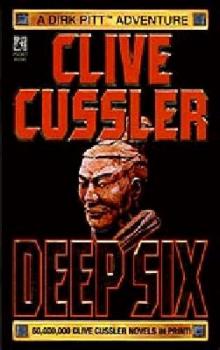 Deep Six
Deep Six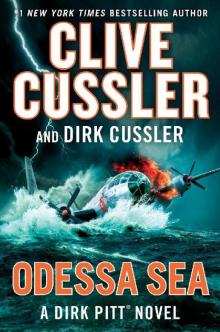 Odessa Sea
Odessa Sea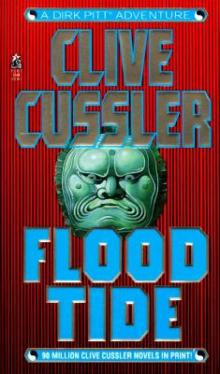 Flood Tide
Flood Tide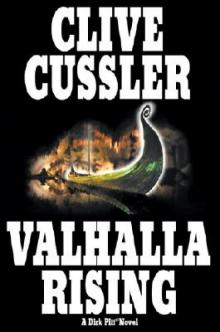 Valhalla Rising
Valhalla Rising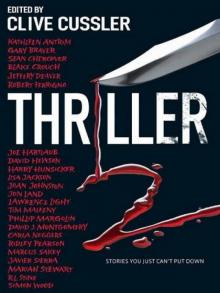 Thriller 2
Thriller 2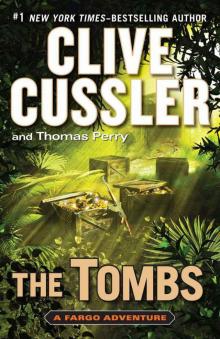 The Tombs
The Tombs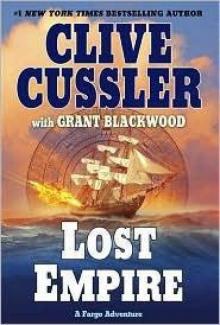 Lost Empire
Lost Empire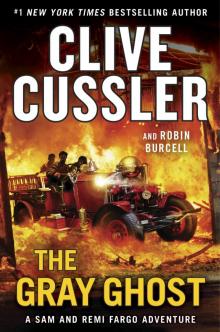 The Gray Ghost
The Gray Ghost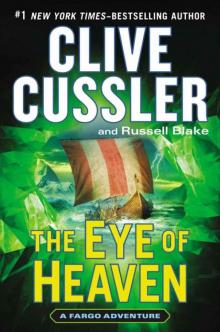 The Eye of Heaven
The Eye of Heaven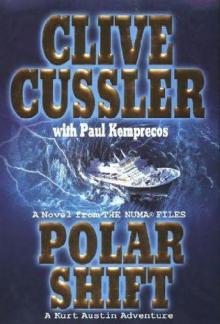 Polar Shift
Polar Shift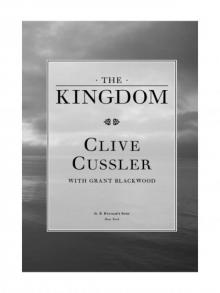 The Kingdom
The Kingdom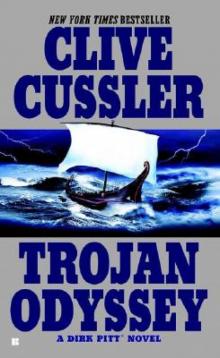 Trojan Odyssey
Trojan Odyssey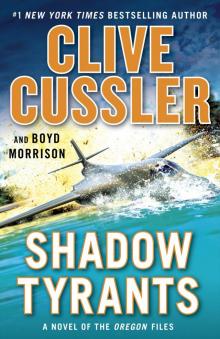 Shadow Tyrants
Shadow Tyrants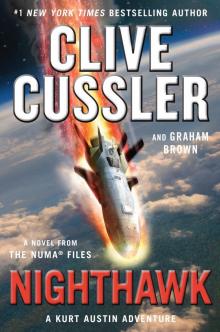 Nighthawk
Nighthawk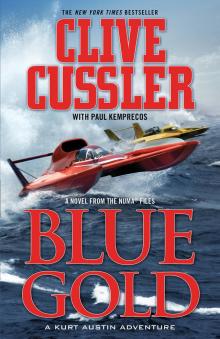 Blue Gold
Blue Gold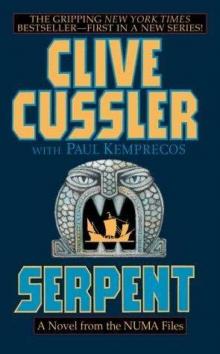 Serpent
Serpent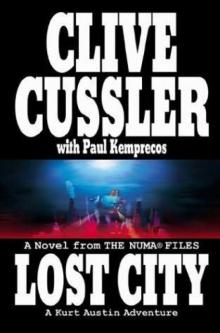 Lost City
Lost City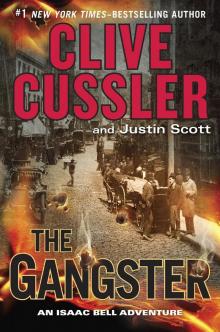 The Gangster
The Gangster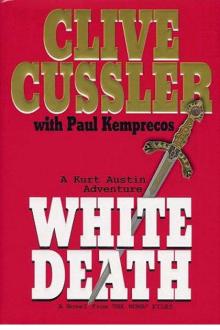 White Death
White Death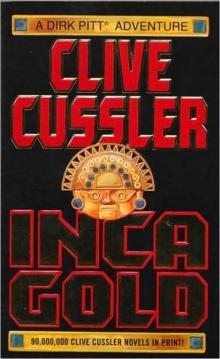 Inca Gold
Inca Gold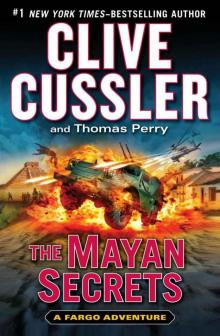 The Mayan Secrets
The Mayan Secrets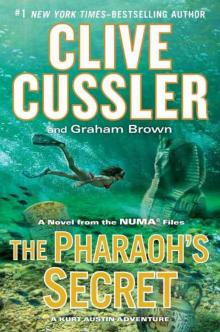 The Pharaoh's Secret
The Pharaoh's Secret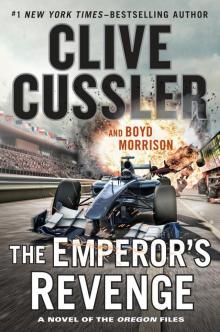 The Emperor's Revenge
The Emperor's Revenge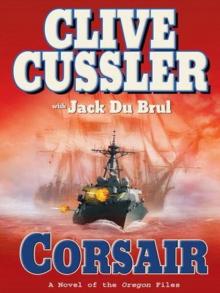 Corsair
Corsair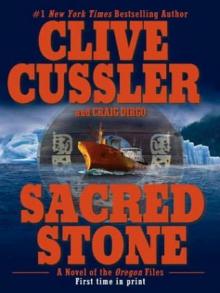 Sacred Stone
Sacred Stone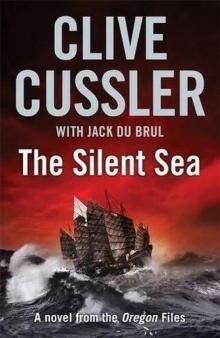 The Silent Sea
The Silent Sea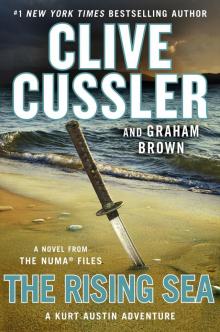 The Rising Sea
The Rising Sea Black Wind
Black Wind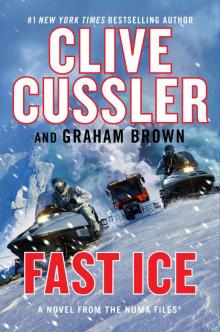 Fast Ice
Fast Ice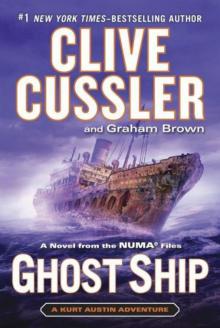 Ghost Ship
Ghost Ship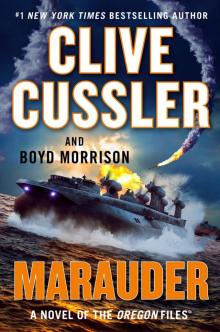 Marauder
Marauder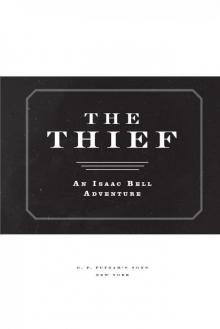 The Thief
The Thief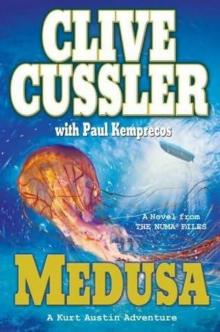 Medusa
Medusa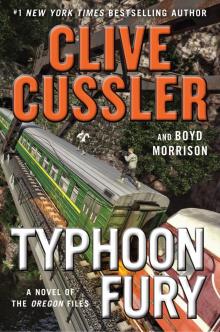 Typhoon Fury
Typhoon Fury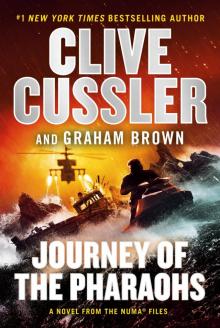 Journey of the Pharaohs
Journey of the Pharaohs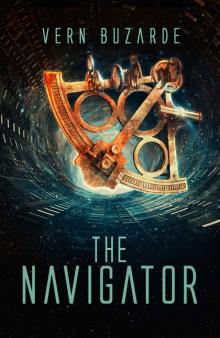 The Navigator
The Navigator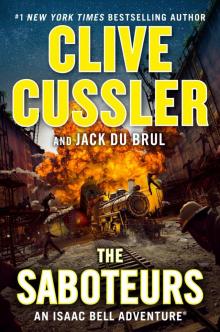 The Saboteurs
The Saboteurs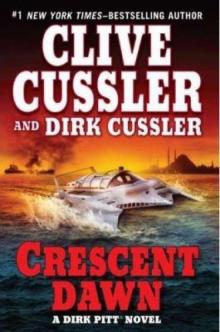 Crescent Dawn
Crescent Dawn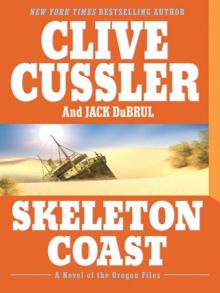 Skeleton Coast
Skeleton Coast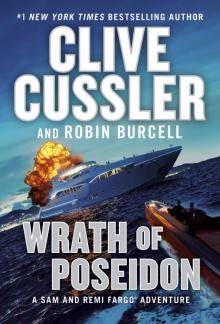 Wrath of Poseidon
Wrath of Poseidon The Mediterranean Caper
The Mediterranean Caper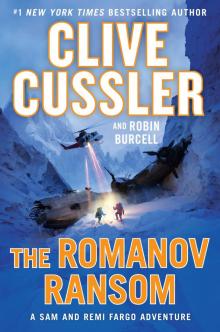 The Romanov Ransom
The Romanov Ransom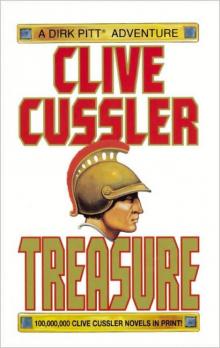 Treasure
Treasure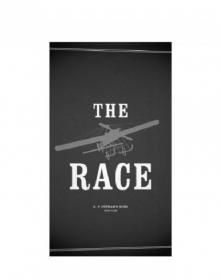 The Race
The Race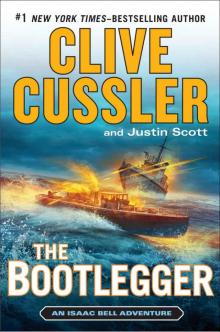 The Bootlegger
The Bootlegger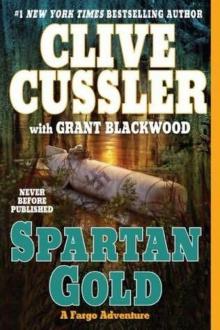 Spartan Gold
Spartan Gold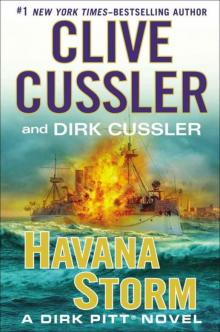 Havana Storm
Havana Storm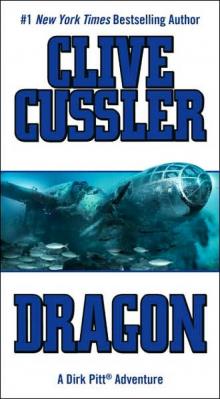 Dragon
Dragon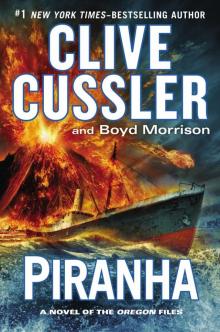 Piranha
Piranha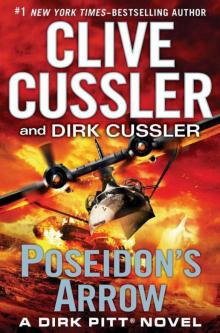 Poseidon's Arrow
Poseidon's Arrow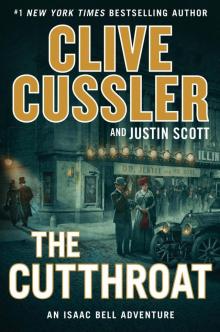 The Cutthroat
The Cutthroat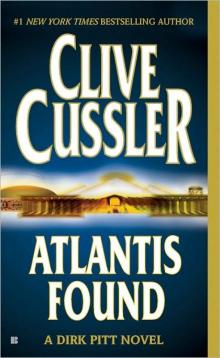 Atlantis Found
Atlantis Found The Jungle
The Jungle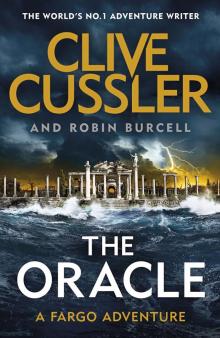 The Oracle
The Oracle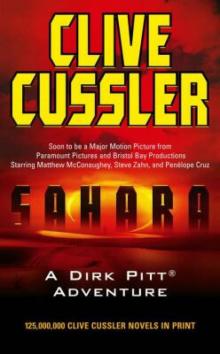 Treasure / Dragon / Sahara: Clive Cussler Gift Set
Treasure / Dragon / Sahara: Clive Cussler Gift Set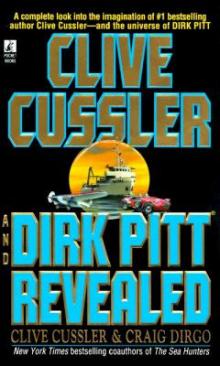 Clive Cussler and Dirk Pitt Revealed
Clive Cussler and Dirk Pitt Revealed The Sea Hunters
The Sea Hunters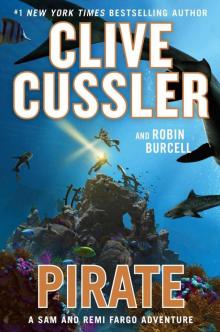 Pirate
Pirate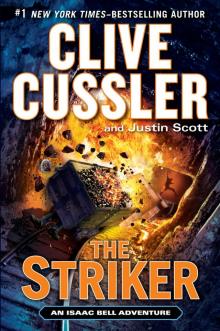 The Striker
The Striker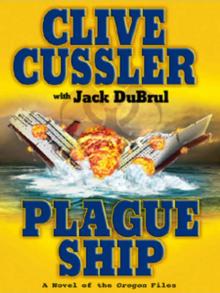 Plague Ship
Plague Ship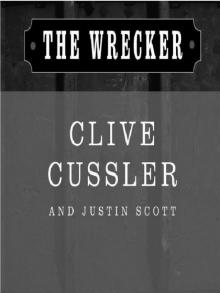 The Wrecker
The Wrecker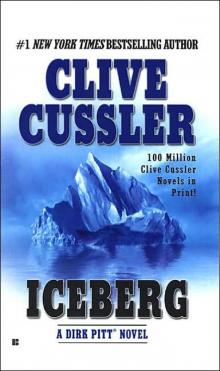 Iceberg
Iceberg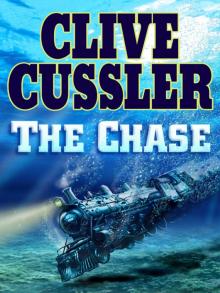 The Chase
The Chase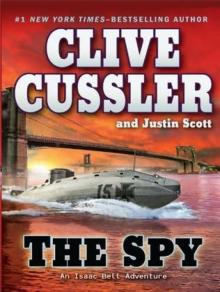 The Spy
The Spy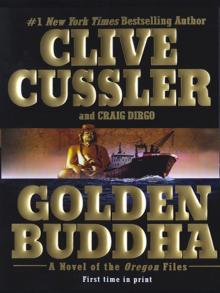 Golden Buddha
Golden Buddha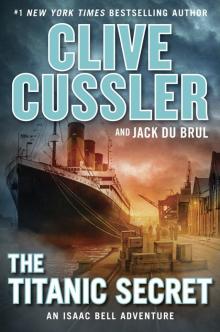 The Titanic Secret
The Titanic Secret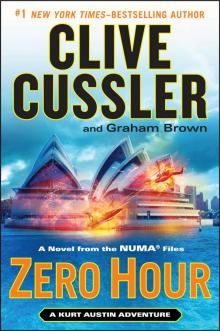 Zero Hour
Zero Hour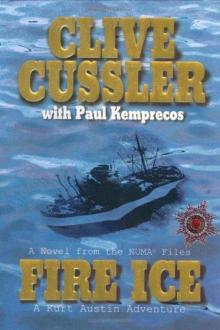 Fire Ice
Fire Ice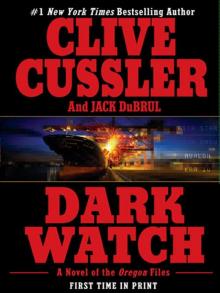 Dark Watch
Dark Watch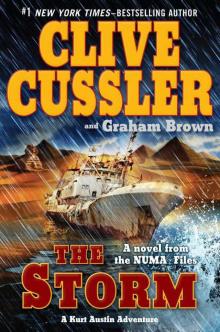 The Storm
The Storm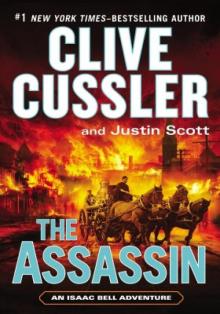 The Assassin
The Assassin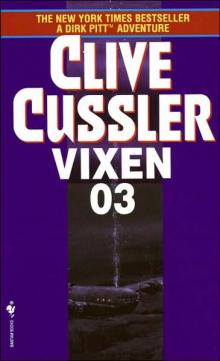 Vixen 03
Vixen 03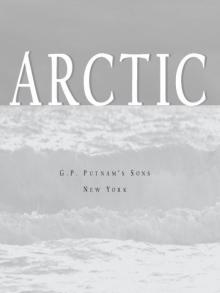 Arctic Drift
Arctic Drift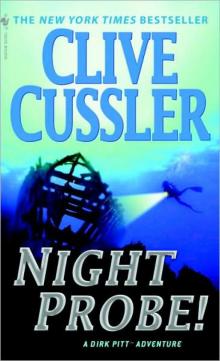 Night Probe!
Night Probe!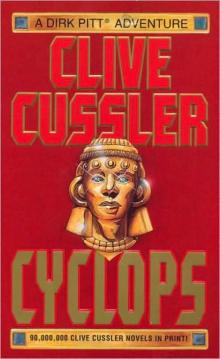 Cyclops
Cyclops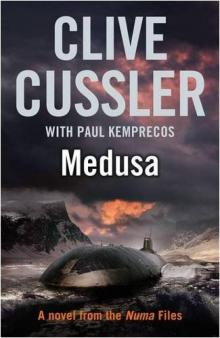 Medusa nf-8
Medusa nf-8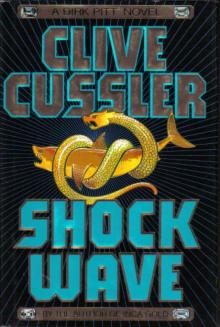 Shock Wave dp-13
Shock Wave dp-13 Marauder (The Oregon Files)
Marauder (The Oregon Files)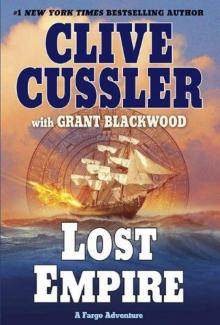 Lost Empire fa-2
Lost Empire fa-2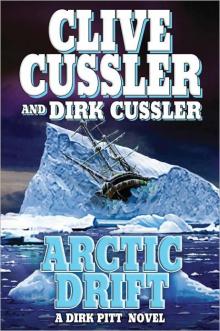 Arctic Drift dp-20
Arctic Drift dp-20 Dirk Pitt 22 - Poseidon's Arrow
Dirk Pitt 22 - Poseidon's Arrow Treasure of Khan dp-19
Treasure of Khan dp-19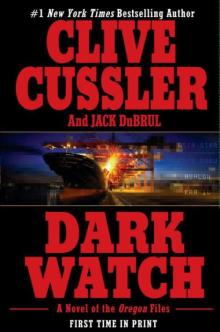 Dark Watch of-3
Dark Watch of-3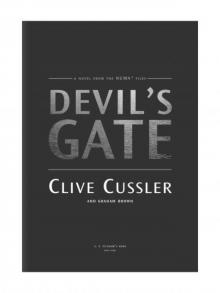 Devil's Gate
Devil's Gate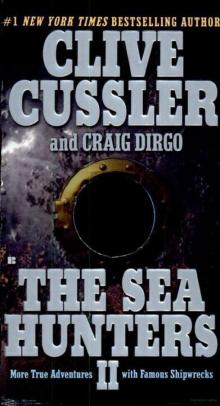 The Sea Hunters II: More True Adventures with Famous Shipwrecks
The Sea Hunters II: More True Adventures with Famous Shipwrecks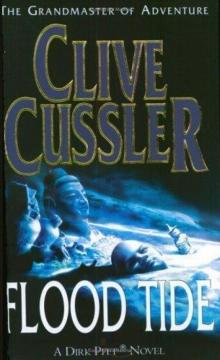 Flood Tide dp-14
Flood Tide dp-14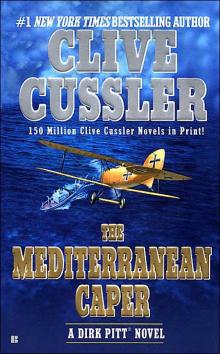 The Mediterranean Caper dp-2
The Mediterranean Caper dp-2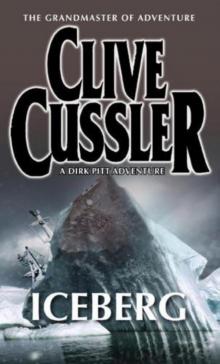 Iceberg dp-3
Iceberg dp-3 Sahara dpa-11
Sahara dpa-11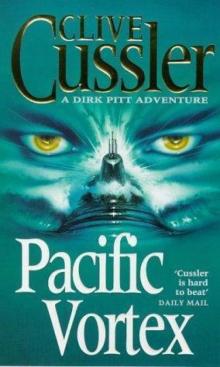 Pacific Vortex! dp-1
Pacific Vortex! dp-1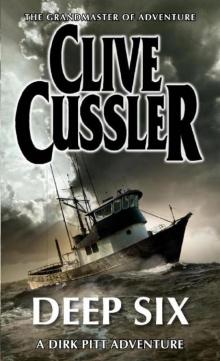 Deep Six dp-7
Deep Six dp-7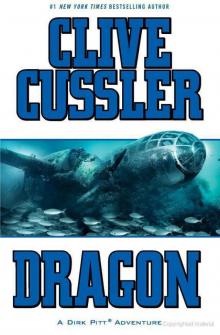 Dragon dp-10
Dragon dp-10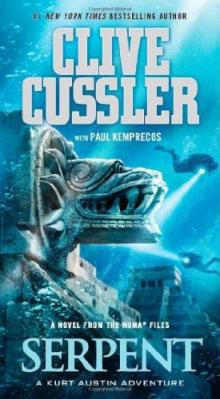 Serpent nf-1
Serpent nf-1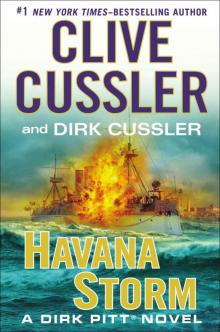 Havana Storm (Dirk Pitt Adventure)
Havana Storm (Dirk Pitt Adventure)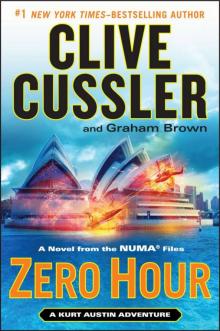 Zero Hour nf-11
Zero Hour nf-11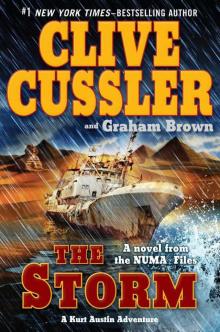 The Storm nf-10
The Storm nf-10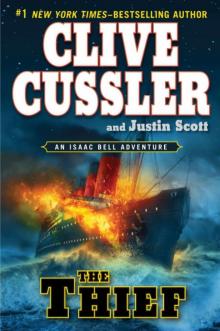 The Thief ib-5
The Thief ib-5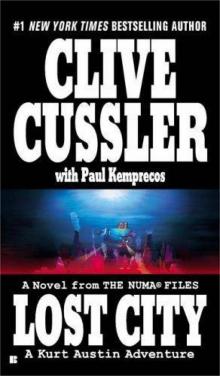 Lost City nf-5
Lost City nf-5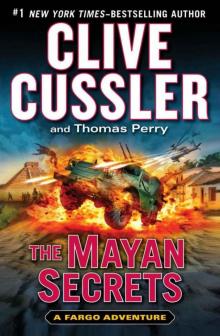 The Mayan Secrets fa-5
The Mayan Secrets fa-5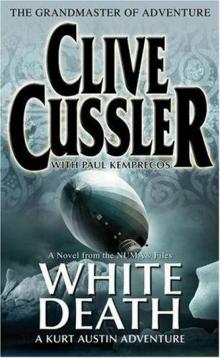 White Death nf-4
White Death nf-4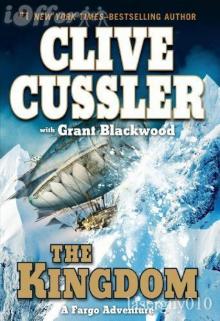 The Kingdom fa-3
The Kingdom fa-3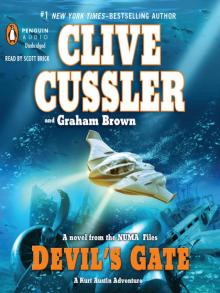 Devil's Gate nf-9
Devil's Gate nf-9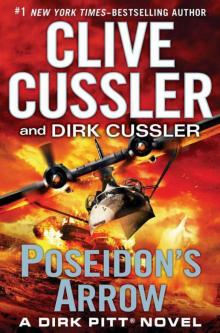 Poseidon's Arrow dp-22
Poseidon's Arrow dp-22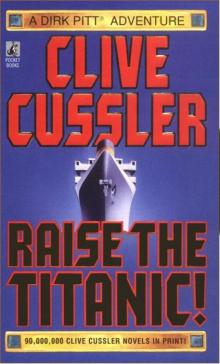 Raise the Titanic dp-4
Raise the Titanic dp-4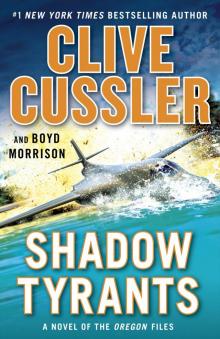 Shadow Tyrants--Clive Cussler
Shadow Tyrants--Clive Cussler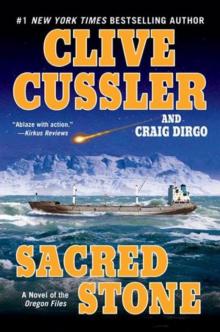 Sacred Stone of-2
Sacred Stone of-2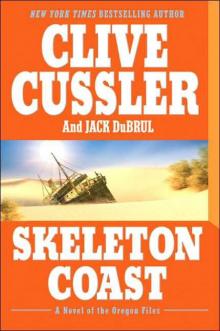 Skeleton Coast tof-4
Skeleton Coast tof-4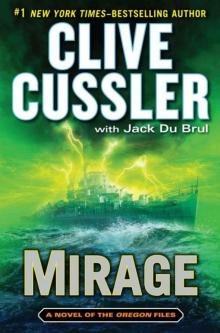 Mirage tof-9
Mirage tof-9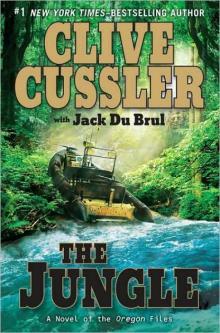 The Jungle of-8
The Jungle of-8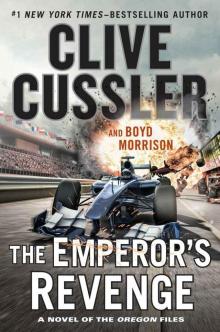 The Emperor's Revenge (The Oregon Files)
The Emperor's Revenge (The Oregon Files)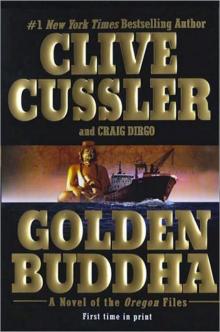 Golden Buddha of-1
Golden Buddha of-1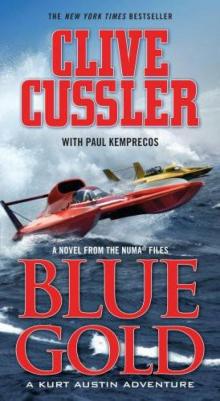 Blue & Gold
Blue & Gold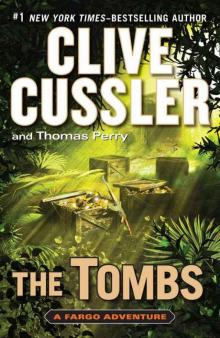 The Tombs fa-4
The Tombs fa-4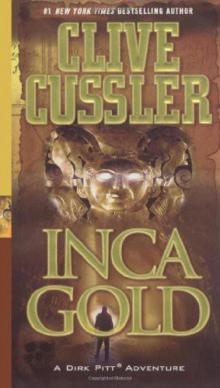 Inca Gold dp-12
Inca Gold dp-12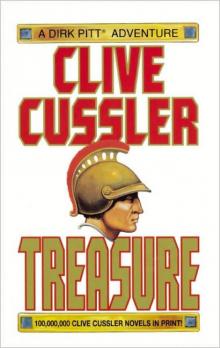 Treasure dp-9
Treasure dp-9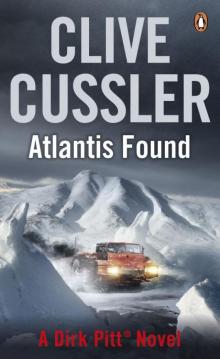 Atlantis Found dp-15
Atlantis Found dp-15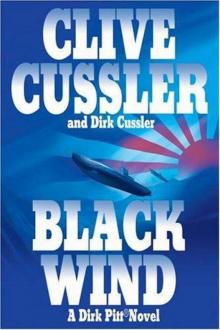 Black Wind dp-18
Black Wind dp-18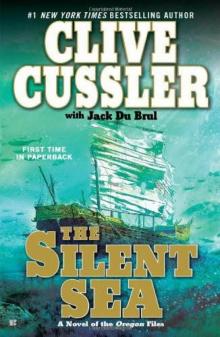 the Silent Sea (2010) tof-7
the Silent Sea (2010) tof-7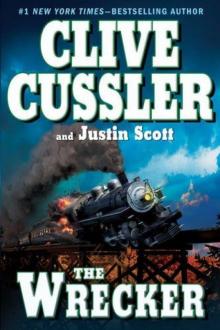 The Wrecker ib-2
The Wrecker ib-2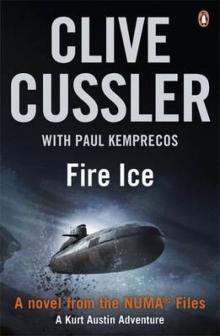 Fire Ice nf-3
Fire Ice nf-3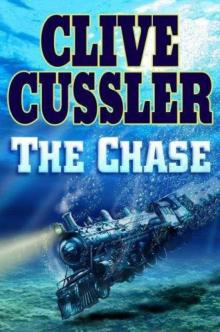 The Chase ib-1
The Chase ib-1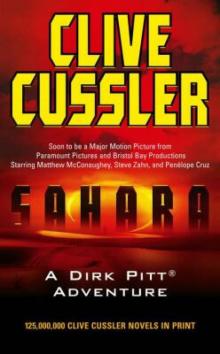 Sahara
Sahara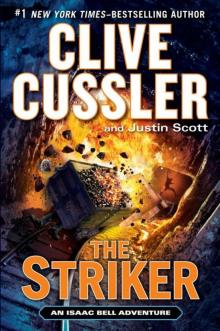 The Striker ib-6
The Striker ib-6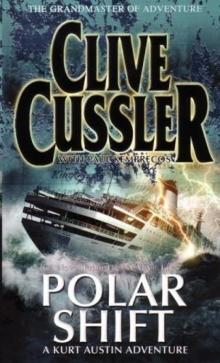 Polar Shift nf-6
Polar Shift nf-6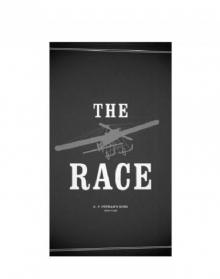 The Race ib-4
The Race ib-4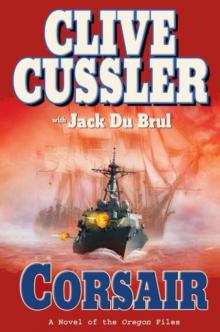 Corsair of-6
Corsair of-6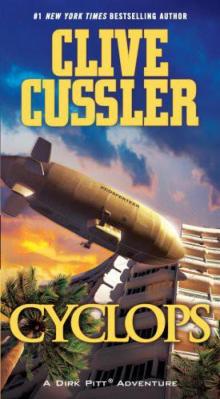 Cyclops dp-8
Cyclops dp-8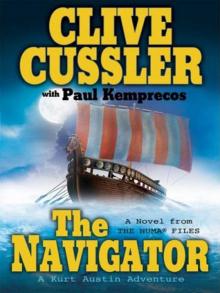 The Navigator nf-7
The Navigator nf-7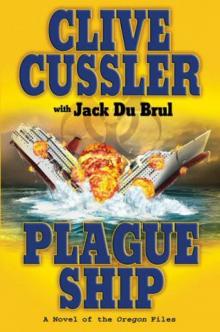 Plague Ship tof-5
Plague Ship tof-5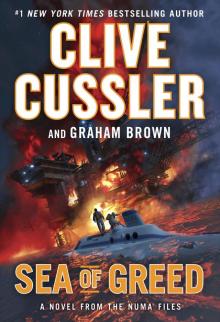 Sea of Greed
Sea of Greed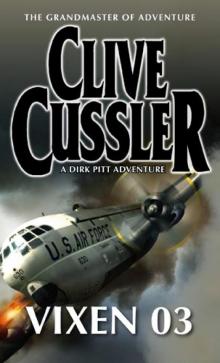 Vixen 03 dp-5
Vixen 03 dp-5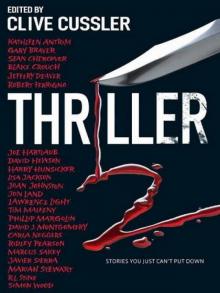 Thriller 2: Stories You Just Can't Put Down
Thriller 2: Stories You Just Can't Put Down